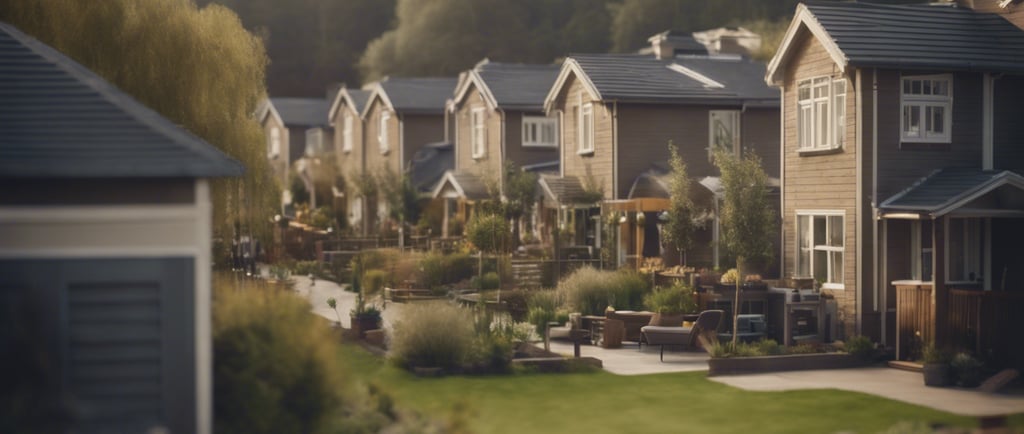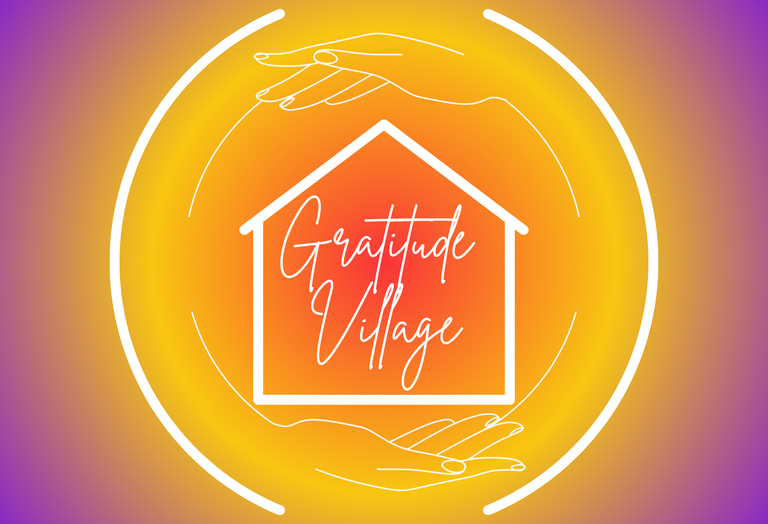Join our next Information Session at Lakewood Library (20th Ave) Saturday November 15 from 3-5pm MST
Designing for Community: The Architecture of Cohousing
In this article we discuss the architectural and design principles that make cohousing unique such as shared spaces, smaller private homes, and the integration of communal areas.
Gratitude Village
9/27/20245 min read


Designing for Community: The Architecture of Cohousing
In an era where urban development often prioritizes individualism and privacy, cohousing stands out as a beacon of community-focused living. The architecture of cohousing is not just about creating homes; it’s about designing spaces that foster connection, cooperation, and a sense of belonging. The physical layout of a cohousing community plays a crucial role in shaping the social dynamics within it, encouraging interactions that form the foundation of a close-knit community. This blog explores how the architecture of cohousing is intentionally crafted to promote community, highlighting the key design principles that make it a unique and effective model for communal living.
1. Intentional Layout: Clustering Homes Around Shared Spaces
One of the defining features of cohousing architecture is the intentional layout of homes around shared spaces. Unlike conventional neighborhoods, where homes are often isolated from one another, cohousing communities are designed to bring people together. Homes are typically clustered around a central courtyard, garden, or common house, creating a focal point that encourages interaction among residents.
This layout is more than just aesthetically pleasing; it’s a strategic design choice that facilitates spontaneous encounters and socialization. When homes face a shared space, residents are more likely to run into each other while going about their daily routines—whether it’s walking to the common house for a meal, tending to a communal garden, or simply sitting outside and enjoying the day. These casual interactions are the building blocks of strong community relationships, turning neighbors into friends and fostering a sense of belonging.
Moreover, the proximity of homes to shared spaces ensures that residents can easily participate in communal activities and events. Whether it’s a potluck dinner, a gardening project, or a community meeting, the layout makes it convenient for everyone to get involved. This ease of participation reinforces the communal spirit and encourages residents to take an active role in the life of the community.
2. The Common House: The Heart of the Community
The common house is often referred to as the heart of a cohousing community, and for good reason. This shared space serves as a hub for social activities, communal meals, meetings, and other gatherings. The design of the common house is central to the architecture of cohousing, as it provides a space where residents can come together regularly and build relationships.
Common houses are typically designed to be warm, inviting, and versatile, accommodating a wide range of activities. They often include a large kitchen and dining area where residents can prepare and share meals, a living room for socializing, and additional spaces for meetings, workshops, or recreational activities. Some common houses may also have guest rooms, laundry facilities, or even a shared office space, depending on the needs of the community.
The design of the common house is focused on flexibility and inclusivity, ensuring that it can be used by all members of the community, regardless of age or ability. Large windows and open layouts create a sense of openness and connection to the outdoors, while comfortable furnishings and warm colors make the space feel welcoming and homey. This careful attention to design helps make the common house a place where residents want to spend time, fostering a sense of community and shared purpose.
Furthermore, by clustering homes to face the common house and designing the community so residents pass through or by the common house to get to their own homes, spontaneous interactions with neighbors are much more likely. Add to that a place for mail and delivery collection, a south facing patio for outdoor gatherings and spaces for other daily activities such as working out, and the common house becomes the place to be, the true heart of the community.
3. Private Homes with a Community Focus
While cohousing emphasizes communal living, it also respects the need for privacy and personal space. The architecture of cohousing strikes a balance between private and shared spaces, ensuring that residents have their own homes where they can retreat and enjoy solitude when needed. However, these private homes are designed with a community focus, ensuring that they contribute to the overall sense of connection within the community.
Homes in a cohousing community are typically modest in size, reflecting the emphasis on shared resources and communal living. They are often designed to be energy-efficient and sustainable, with features like passive solar heating, natural ventilation, and the use of eco-friendly materials. The design of the homes also encourages interaction with the surrounding community, with front porches, large windows, and open layouts that create a sense of transparency and openness. Successful communities have found that having the kitchen at the front of the house, facing the common grounds and common house, also encourages more interaction amongst residents.
The positioning of the homes within the community is also carefully considered. For example, front doors and windows are often oriented towards shared spaces, rather than away from them, to encourage residents to engage with their neighbors. The layout of pathways and walkways is also designed to facilitate interaction, with winding paths that encourage people to stop and chat, rather than straight, functional walkways that simply lead from point A to point B. And with cars relegated to the periphery of the community, everyone has to regularly walk by each other’s homes to get where they are going.
4. Shared Outdoor Spaces: Connecting with Nature and Each Other
Outdoor spaces play a crucial role in the architecture of cohousing, providing residents with opportunities to connect with nature and each other. These spaces are designed to be more than just decorative; they are functional areas where residents can gather, play, and work together.
Gardens, courtyards, and play areas are often centrally located, making them accessible to all residents and encouraging their use. These shared outdoor spaces are typically designed to accommodate a variety of activities, from gardening and picnicking to children’s play and community events. The design often incorporates elements of nature, such as native plants, trees, and water features, creating a peaceful and inviting environment where residents can relax and unwind.
The integration of nature into the architecture of cohousing is not just about aesthetics; it’s also about promoting sustainability and well-being. Gardens and green spaces provide opportunities for residents to grow their own food, reducing their environmental footprint and fostering a sense of connection to the earth. These spaces also offer a natural setting for social interaction, where residents can work together on gardening projects, enjoy a meal outdoors, or simply take a walk and enjoy the beauty of their surroundings.
5. Sustainable Design: Building for the Future
Sustainability is a key principle in the architecture of many cohousing neighborhoods, with communities often prioritizing eco-friendly design and construction methods. This focus on sustainability reflects the communal values of cohousing, where residents are committed to living in harmony with the environment and reducing their collective impact on the planet.
Cohousing communities often incorporate a range of sustainable design features, such as energy-efficient buildings, renewable energy sources, and water-saving technologies. Homes may be built using environmentally friendly materials, and the community may have systems in place for recycling, composting, and reducing waste. The shared nature of cohousing also contributes to sustainability, as residents can pool resources and share tools, vehicles, and other items, reducing the need for each household to own and maintain its own set of goods.
The architecture of cohousing also promotes sustainability through its emphasis on community. By fostering a strong sense of connection and cooperation, cohousing encourages residents to live more lightly on the earth, sharing resources and supporting each other in their efforts to live sustainably. This communal approach to sustainability not only benefits the environment but also strengthens the bonds between residents, creating a community that is resilient and prepared to face the challenges of the future.
Conclusion
The architecture of cohousing is about more than just building homes; it’s about creating a physical environment that nurtures community, connection, and sustainability. Through intentional design, cohousing communities foster social interaction, collaboration, and a shared sense of purpose, creating a way of living that is both fulfilling and sustainable. Whether it’s the clustering of homes around shared spaces, the central role of the common house, or the integration of nature and sustainable design, the architecture of cohousing is a powerful tool for building strong, vibrant communities. In a world where true connection is increasingly rare, cohousing offers a blueprint for how we can design our living spaces to support and sustain the communities we all crave.
COMMUNITY
Join us in embracing nature, diversity and connection.
Sustainability
DIVERSITY
info@gratitudevillageco.com
720-689-4821
© 2025. All rights reserved.
AFFORDABILITY
Gratitude Village Inc. is a 501(c)3 charitable corporation that values diversity, equity, and inclusion as essential to our mission
Subscribe to our Substack
Refund Policy




Gratitude Village is a Proud Member of these organizations
